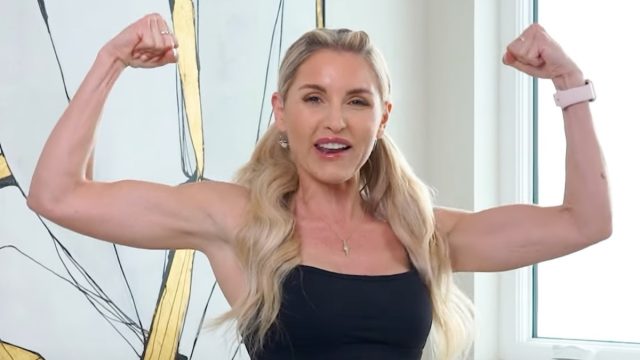Rebecca Louise Shares 10-Minute Upper Body Workout For Slender Arms
Do you want to get an upper body workout in but only have 10 minutes to spare? Rebecca Louise is a fitness trainer and social media influencer who created the BURN method. She regularly shares content across all platforms helping her followers get into shape via diet and exercise. In a recent YouTube video, she reveals a 10-minute upper body workout that can be done in the comfort of your own home.
"Today we are doing a toned arms and upper body workout," she says, revealing the "great exercises to work your upper body for that slender and toned feel." No weights, no problem! "If you don't have any weights, it's no problem, just grab some water bottles, but I highly recommend that you either grab some of our new ankle and wrist weights or you grab yourself some weight," she says. Here is everything you need to know about the workout, which we recommend following along via her YouTube video.
Overhead Press
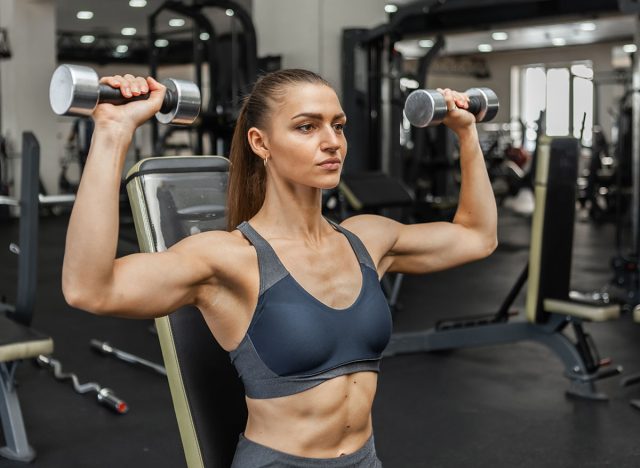
She starts with an overhead press. "We are just going to press the arms over the top and then pull that core in nice and tight, get those arms at 90 degrees and press up to the sky," Rebecca says in the clip.
RELATED: 7 Methods to Melt Body Fat: Fact or Myths?
Flies
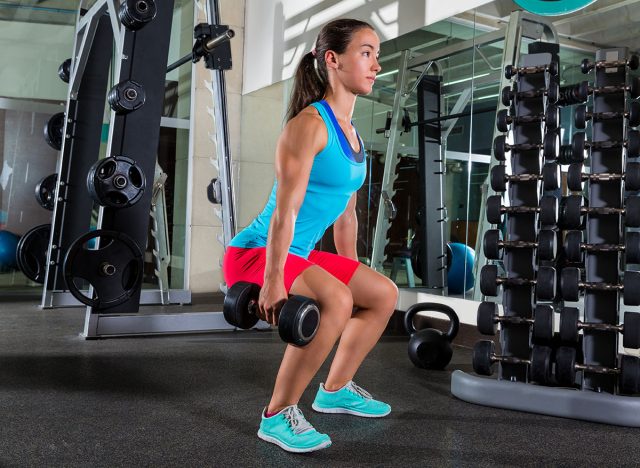
"We're going to take it into our fly, so we're going to keep those legs exactly where they were. We're going to hinge over at the hips, big bend in the knee, and all you're going to do is you're going to fly out to the side," she continues. "So you've got a slight bend in your elbow and you're really going to think about squeezing your shoulder blades and your back together. You're going to give yourself a good smile and you're going to really pull your back together. So lean in just a little bit further and then utilize your back and squeeze your shoulder blades together."
Elbow Raises
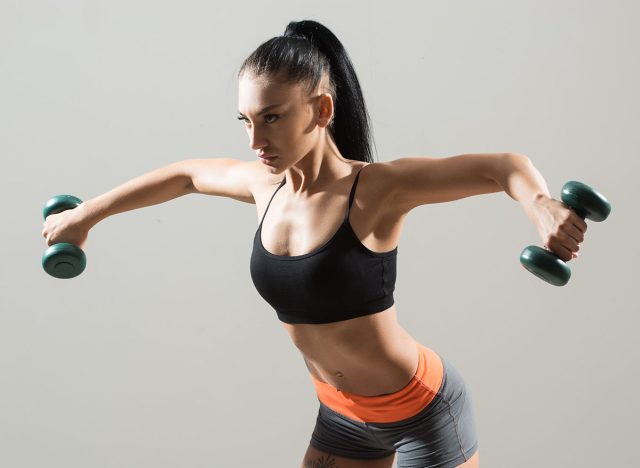
Next up, elbow raises. "So you are going to stand up nice and tall. You're going to have a slight bend in your knee and the feet are going to be closer together this time, and we're just going to bring those elbows out to the side. So stand up for me and here we go. 40 seconds is on the clock," she says.
Forward Raises

"We're going to take it into our forward raises," she says, going on to explain how to do the exercise. "So palms are facing towards each other. You're going to pull the core in nice and tight. You're just going to extend one weight in front, one at a time."
Bicep Curls
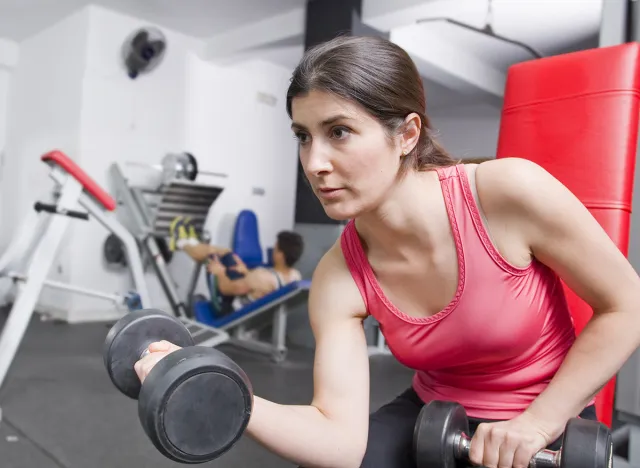
Next up, bicep curls, which she recommends squeezing the elbows back. "We're not going to bring them forward. Bring those elbows back and then raise up and down. What that's going to do is you're going to feel a little bit more tension in your biceps, all right? Slight bend in your knees. Now bring the elbows back. You're going to work even more of that bicep muscle, full extension all the way up and full extension all the way down."
Overhead Tricep Dip
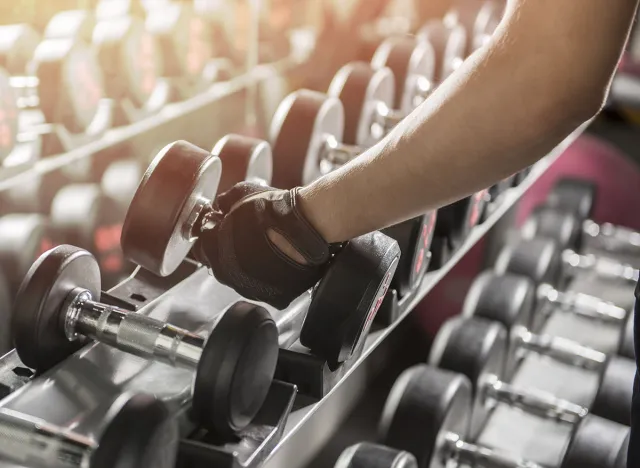
She moves onto an overhead tricep dip. "So you can bring one weight down to the ground. Again, you want to use weights that are going to challenge you. I've got five pounds in my hands right here when I'm working out by myself and I'm not chatting away. I'm using anything from 8 to 10 to 12 to 15 pounds. So everything else stays nice and controlled, nothing else is moving. We're just moving that forearm up and down. Again, press those feet firmly down into your mat and then extend the weights up and down, slow and controlled. You've got this. You are halfway there on this exercise slide. Bend in the knee, raise your arms all the way up to the sky and give yourself a smile."
Around the World
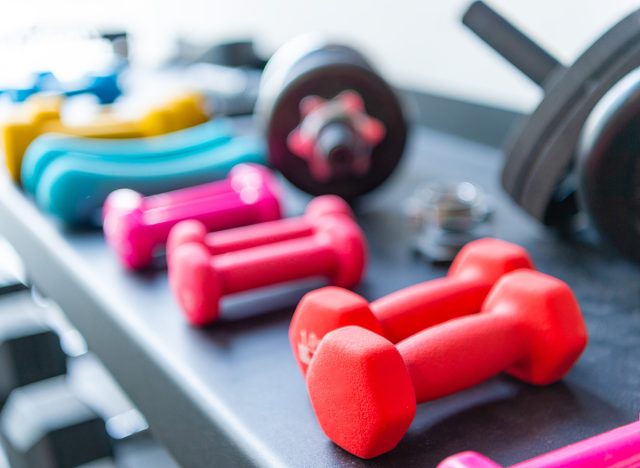
She grabs another weight and moves on to around the world. "So feet, nice and firm down on the ground. We're going to take it up to the top, and then we're going to bring those weights all the way down slightly in front of you. Tap the weight in front and then up to the top. Here we go. 40 seconds is on the clock. Inhale and exhale."
Rows
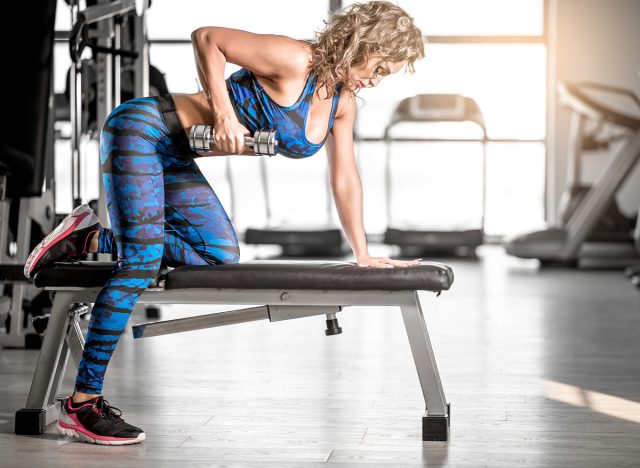
She then does rows, explaining that you can start with the right or left arm. "We're going to bring those weights all the way in front, and then we're just going to row up to the side. So we're going to help that other arm, nice and strong. And then we're going to think about squeezing through your waist. So that's it. Each rep squeeze through and all the way down. Now lean into it just a little bit more. Press those heels firmly down into the ground and then bring that weight up out to the side. Inhale and exhale."
RELATED: I'm a Nutritionist and These are the Best Banana Recipes For Weight Loss
Hammer Curls
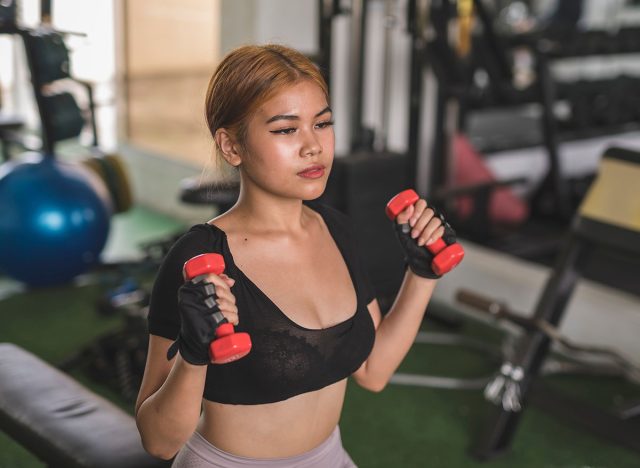
"We're going to take it into our hammer curls," she continues. "So again, our weights are going to be facing towards us, and we're going to bring those weights up and then we're going to take it all the way down, just like that bicep curl. We're going to still keep those elbows close to our waist, and we're going to take it all the way up and then all the way down."
Lateral Raises
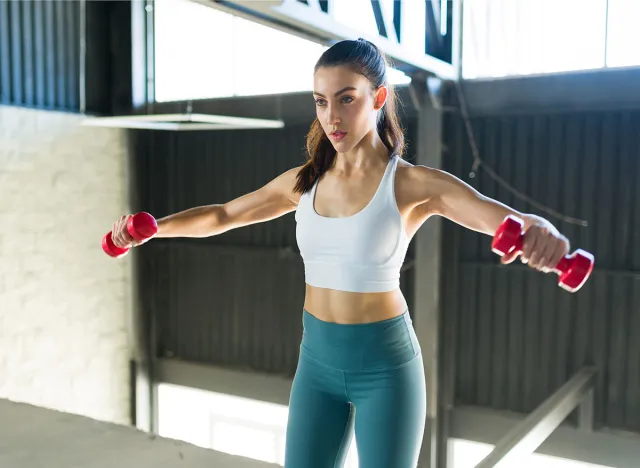
For the "final exercise," she demonstrates lateral raises. "So feet again, now hit with distance apart, maybe just a little bit wider, slightly bending the knee, and we're just going to take those raises out to the side."
Related: This Is Exactly How to Lose Body Fat This Year
Expert's Verdict: Excellent Mix
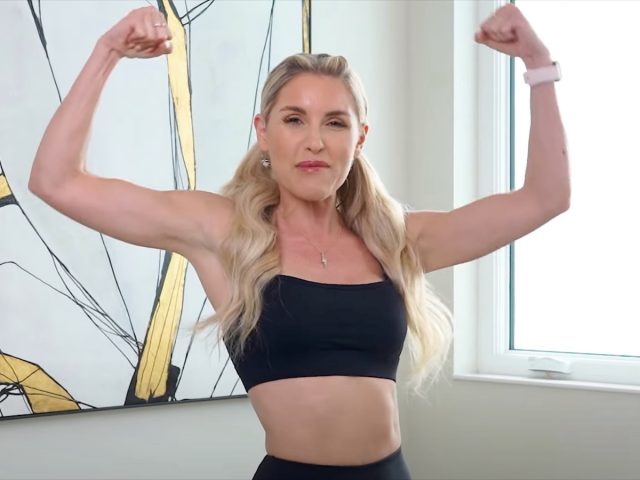
Collingwood is a fan of this workout, an "excellent mix of different upper body exercises to work the shoulders, biceps, triceps, and a little bit of the back and chest," she says. She recommends doing each exercise twice for two sets. "Each exercise is safe and works the muscle group well," she notes. "The only thing I would add would be a chest exercise like chest press or chest fly to get all of the upper body muscles."
💪🔥Body Booster: Even if you only have 10 minutes, get a workout in – your body will thank you.
